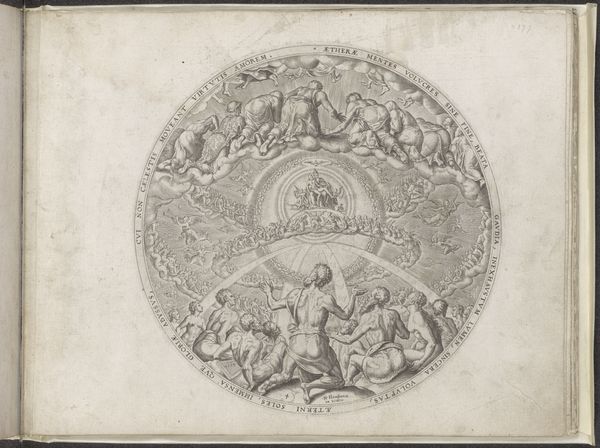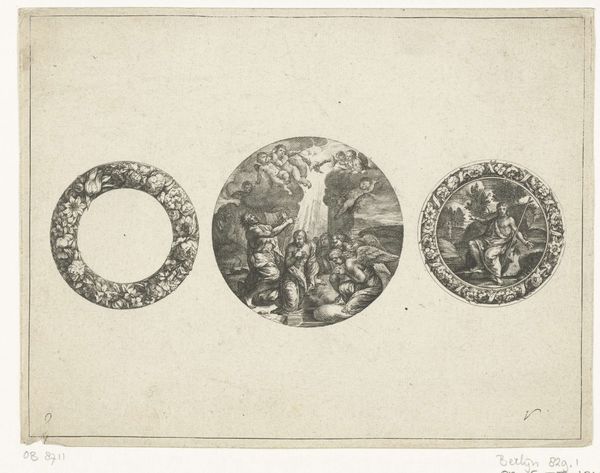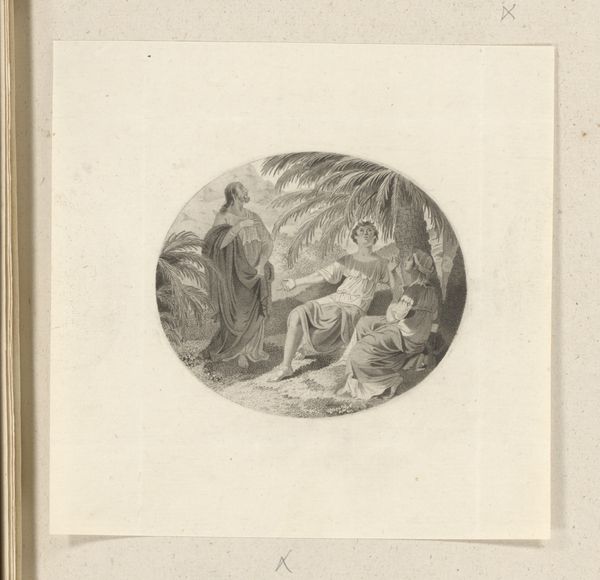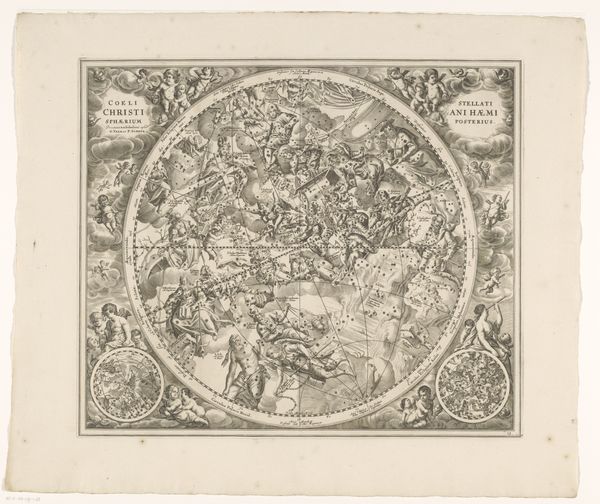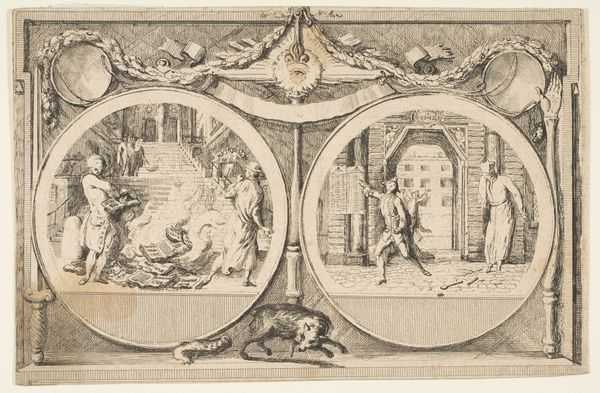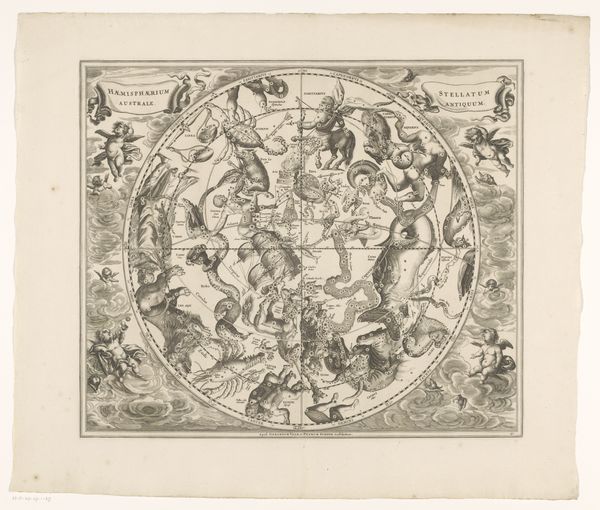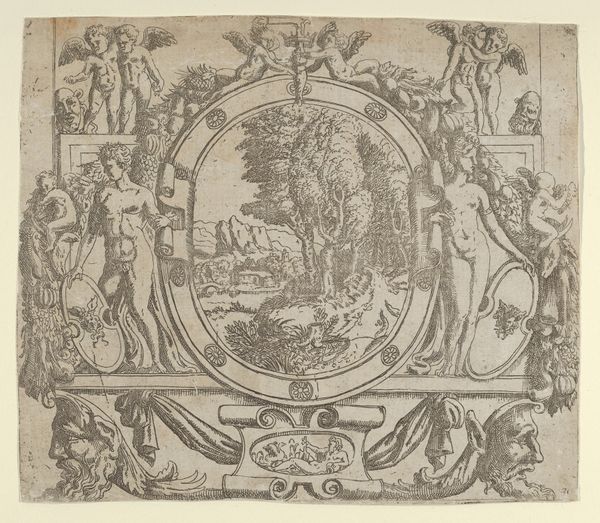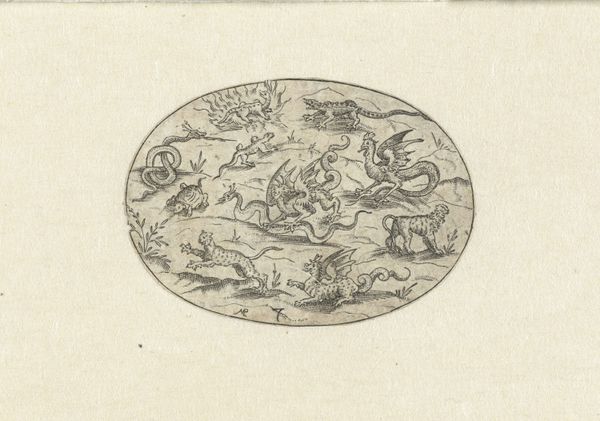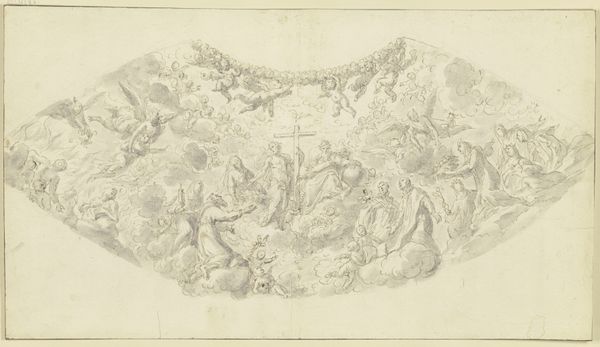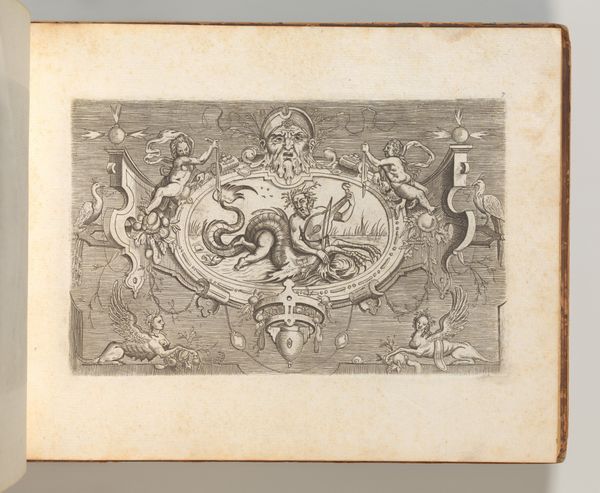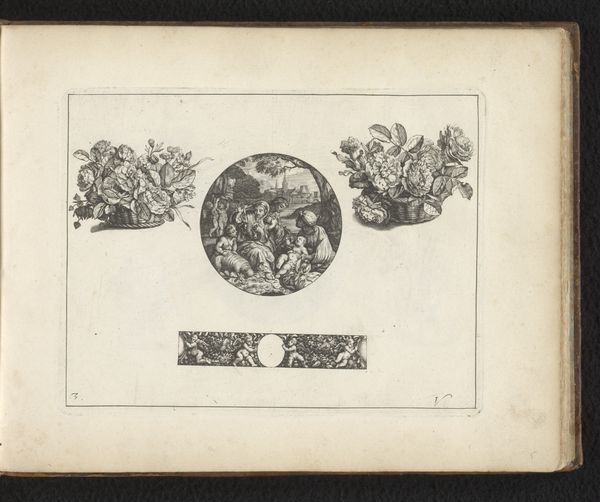
Copyright: Rijks Museum: Open Domain
Curator: This is a piece titled "Hel," crafted in 1569 by Philips Galle. It's currently housed in the Rijksmuseum. Editor: My initial impression is one of swirling chaos, a dense vortex of figures seemingly caught in an inescapable nightmare. Curator: Exactly. Galle’s visualization taps into deep-seated anxieties regarding punishment, the afterlife, and societal control prevalent during the late Renaissance. The work reflects a broader cultural fascination—or perhaps obsession—with the horrors awaiting those who transgressed established moral codes. Think about the witch hunts and religious wars. Galle offers a very pointed vision on the social constructs of his time. Editor: Visually, the circular composition is striking. The engraving teems with interconnected bodies. The interplay of light and shadow, created through delicate linework, amplifies the overall sense of drama. The textures – the slickness of skin against the roughness of flames - contribute to the print's disquieting affect. It reminds one of a classical interpretation of Baroque's visual elements. Curator: Beyond the formal composition, the placement of figures holds potent symbolism. Notice how the damned souls writhe in perpetual torment, their postures suggesting physical and emotional anguish. And there are references in the text on the outer ring – words promising a continuous cycle of pain. Editor: So the artistry is designed to reinforce that concept. The overlapping, almost claustrophobic arrangement of figures creates a feeling of inescapable suffering. Are those mythological figures among them? Curator: Indeed. Galle merges classical imagery with contemporary concerns. In his construction of Hell, the agony is not just physical; it is psychological, it speaks of isolation and unrelenting despair. He uses classical figures to comment on his society, and what it could become without structure. Editor: It makes you think about the period's complex relationship with faith and the rise of humanist thought, which questioned traditional dogma. Thanks to Galle’s vision, the intricate design elements do convey that fear so powerfully. Curator: Agreed. The visual construction enhances a narrative that critiques established power structures by tapping into collective anxieties of eternal punishment. It pushes beyond the artwork’s technical prowess to reflect the intricacies of belief, authority, and the self in 16th-century Europe. Editor: Thank you for bringing the cultural and historical elements of Galle’s work into relief. The focus on this work’s aesthetic structure opened new pathways for understanding it.
Comments
No comments
Be the first to comment and join the conversation on the ultimate creative platform.
